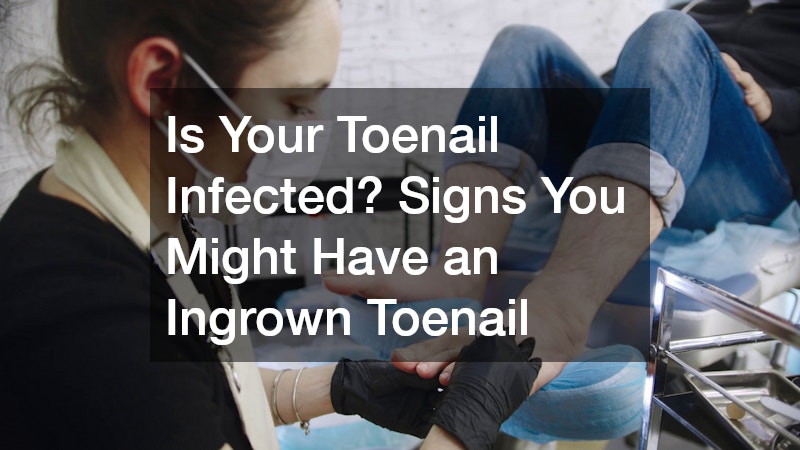
Dealing with foot health can be a challenging ordeal, especially when it comes to detecting and addressing common problems like ingrown toenails. This occurs when the corner or side of a toenail grows into the soft flesh, causing discomfort, pain, and even infection. Recognizing the symptoms of an ingrown toenail early can help prevent complications and ensure appropriate treatment.
Video Source
The human foot is a complex and resilient structure, but it's not immune to issues such as ingrowns. Precise identification is vital to avoid further infection or more invasive procedures such as surgery. This article will explore the signs of toenail infection and provide insights into what you can do if you suspect you have an ingrown toenail.
Understanding your body's signals can make all the difference in maintaining foot health. Early detection can mitigate pain and save you from prolonged discomfort. By focusing on the symptoms and acknowledging the problem, you can seek timely medical attention and avoid more severe consequences.
An ingrown typically starts with noticeable tenderness and swelling around the affected area. This discomfort is often heightened when pressure is applied to the toe, such as when wearing tight shoes. Spotting these early indicators is critical to determining whether you have an ingrown toenail.
As the condition progresses, you may see a change in the color or shape of the toenail and the surrounding skin. Redness and warmth are common visual signs that an infection may be setting in. Observing any new or unusual symptoms in your toe can help you catch an ingrown toenail in its early stages.
Additional symptoms can include persistent throbbing, increased pain, or pus formation around the nail. Such indicators suggest that your body's immune response is trying to fight off a possible infection. Keeping a vigilant eye on these symptoms allows for timely interventions and can save future complications.
They can often be traced back to improper nail cutting practices. Cutting your toenails too short or not straight across can encourage them to grow into the skin. Recognizing poor grooming habits is vital in preventing the occurrence of ingrown toenails.
Another common cause is wearing shoes that are too tight, which can exert undue pressure on the toes and lead to this condition. Over time, constant pressure can cause the toenail to embed itself into the soft tissue of the toe. Ensuring that your footwear is appropriately sized and providing ample room for your toes can help prevent this issue.
A genetic predisposition may also play a role in your risk of developing them. If you have a family history of such conditions, you might be more susceptible to experiencing them yourself. Understanding these underlying causes can assist in taking preventive measures to maintain healthy toenails.
Taking preventive steps can significantly reduce the likelihood of developing an ingrown toenail. Regularly trimming your toenails straight across and at an appropriate length can help maintain their natural growth pattern. Adopting these simple grooming habits is an effective measure for prevention.
If it does occur, there are several at-home treatments that can alleviate mild symptoms. Soaking your foot in warm, soapy water can help reduce swelling and discomfort in the affected area. Incorporating over-the-counter pain relievers may also provide temporary relief.
However, if the condition worsens or infection sets in, it is crucial to consult a healthcare professional. In some cases, a doctor might need to lift or remove the ingrown part of the nail and may prescribe antibiotics to tackle any infection. Timely intervention is essential for a full recovery and to prevent recurring issues.
Living with an ingrown can be a painful and frustrating experience, but early identification and intervention are key. Recognizing the signs and understanding the causes can put you on the path to proper treatment and prevention. With the right approach, youcan manage the condition effectively and maintain healthy toenails.
Whether through personal care adjustments or professional treatment, tackling an ingrown toenail should be a priority for anyone experiencing symptoms. To preserve optimal foot health, it is essential to remain proactive and informed about potential issues like ingrown toenails. By taking appropriate steps, you can ensure your feet remain pain-free and healthy.
Ultimately, addressing the issue promptly can prevent it from becoming a significant problem. With a focus on prevention and timely treatment, you can protect your feet from undue pain and continue to lead an active, healthy life. Understanding the importance of maintaining foot health will ensure long-term comfort and mobility.
.